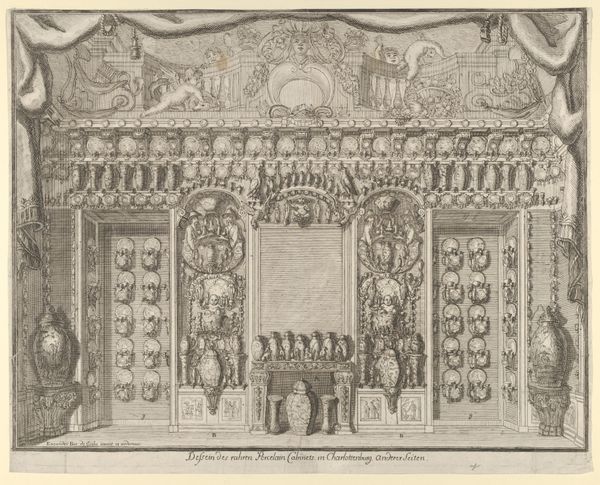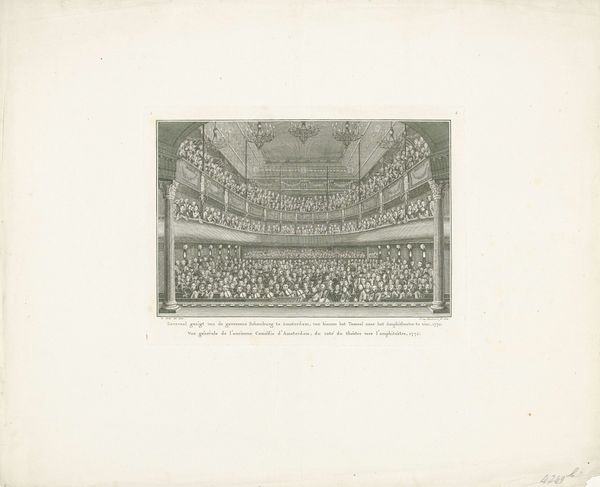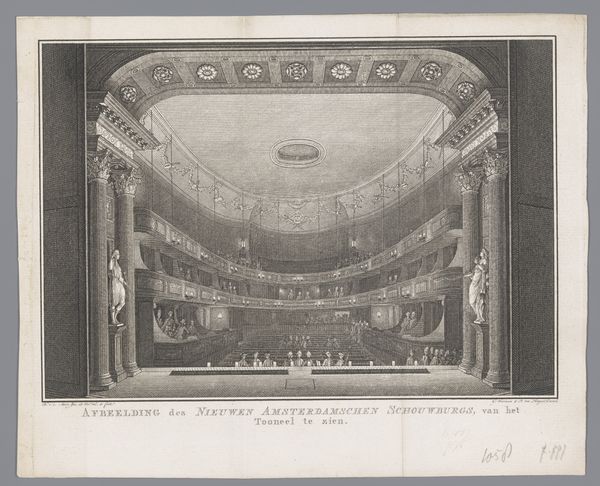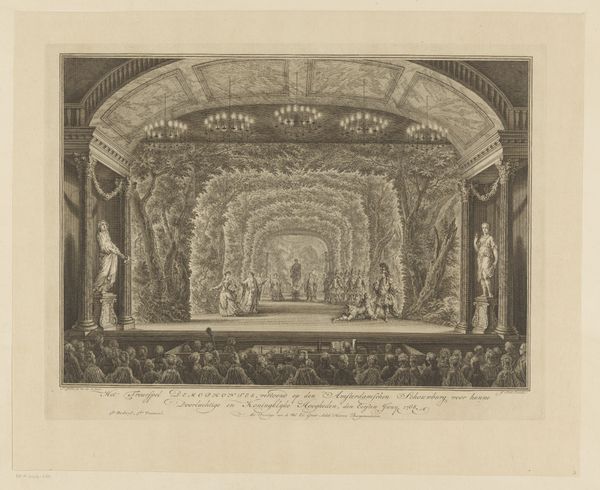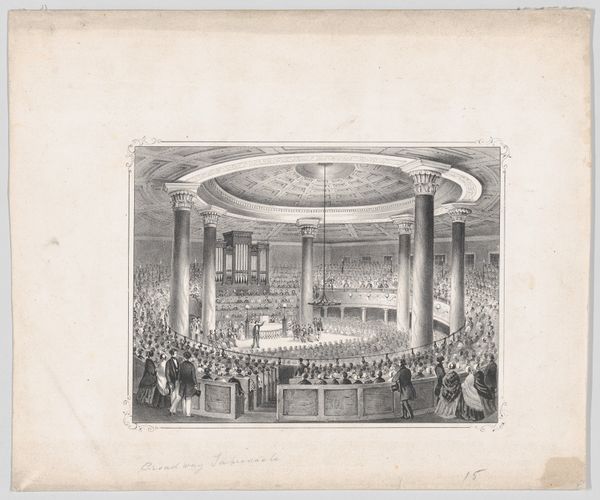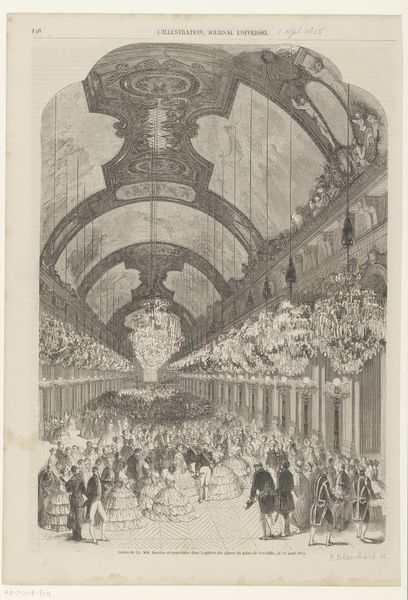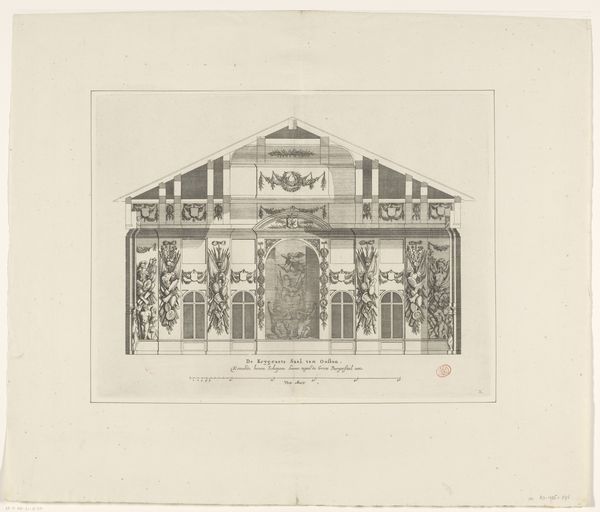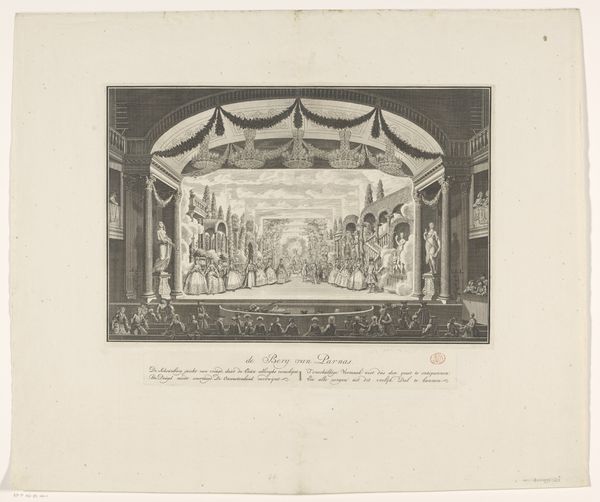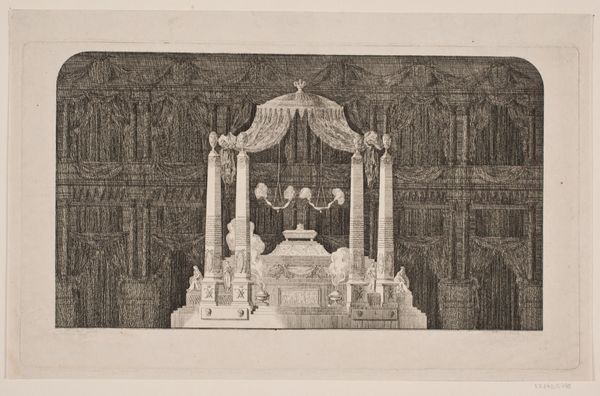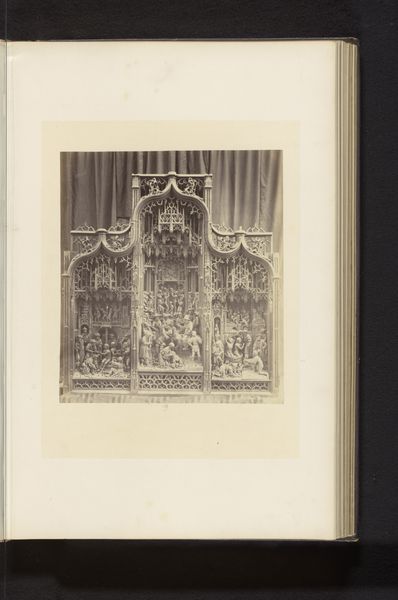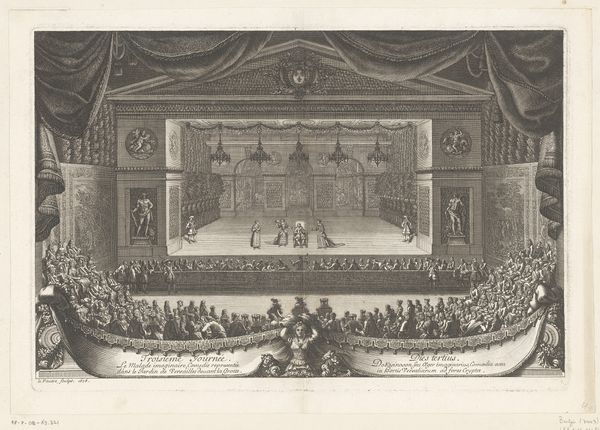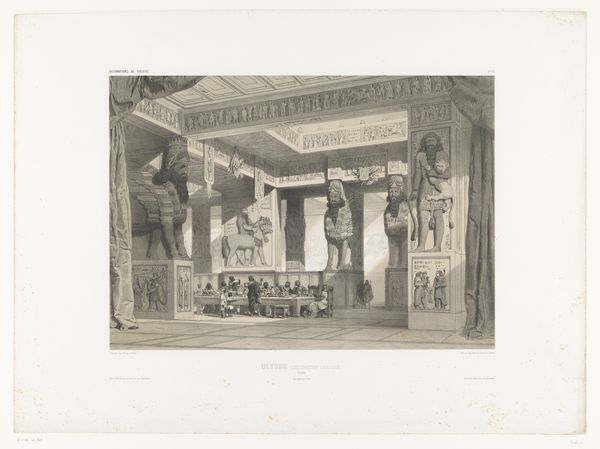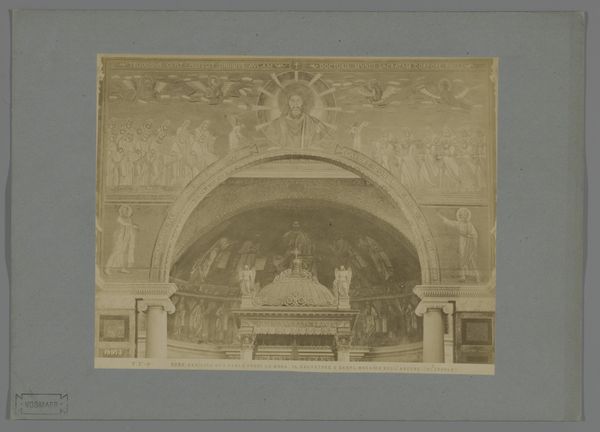
Vorstelijke loge in de Amsterdamse Schouwburg voor het prinselijk paar, 1768 1772
0:00
0:00
Dimensions: height 306 mm, width 411 mm
Copyright: Rijks Museum: Open Domain
Curator: Ah, this detailed engraving is titled *Vorstelijke loge in de Amsterdamse Schouwburg voor het prinselijk paar, 1768*, or Royal Box in the Amsterdam Theater for the Princely Couple, 1768. Simon Fokke created it around 1772. The work provides us a glimpse into a bygone era of performance and societal structure. Editor: My first thought is about the density of bodies. Look at that packed audience. The print creates a sense of hierarchy with its careful depiction of space, with everyone oriented towards the princely couple in their extravagant box. Curator: The royal box looms over everything! It's visually reminiscent of a proscenium arch, framing the privileged spectators as another type of performance, or at least as an exclusive object of display. Consider also the power dynamics within the theater space itself—it’s a stage both for the actors and for the ruling class, playing their role. Editor: Exactly! We see the baroque love of excess but also the rigidity of the class structure. What do you make of the performer on stage, comparatively small and rendered almost generically in the foreground? His figure suggests the theatre’s real subject is power. Curator: A very good observation. The performer embodies the idea of spectacle. The figures in the foreground and the elaborate ornamentation almost overwhelm us. Light emanates not just from the chandeliers but seemingly from the faces of the audience, drawing our eye ever upward towards the box and those presumed figures within. Editor: I’m wondering about accessibility and inclusion. Who are all these spectators? Can we assume a uniformity of class, race, and gender? Probably not. Theater, then and now, is where certain social mores can be momentarily disrupted. This print gives us an idea of the possibilities and limitations within the Amsterdam theater of the time. Curator: It shows us, doesn’t it? The visual encoding of status, meticulously rendered, leaves an enduring cultural fingerprint about representation. Editor: Yes, the art allows us to reimagine, even reenact in a way, this precise configuration of Dutch society. The stage and its spectators reflect and influence each other.
Comments
No comments
Be the first to comment and join the conversation on the ultimate creative platform.
